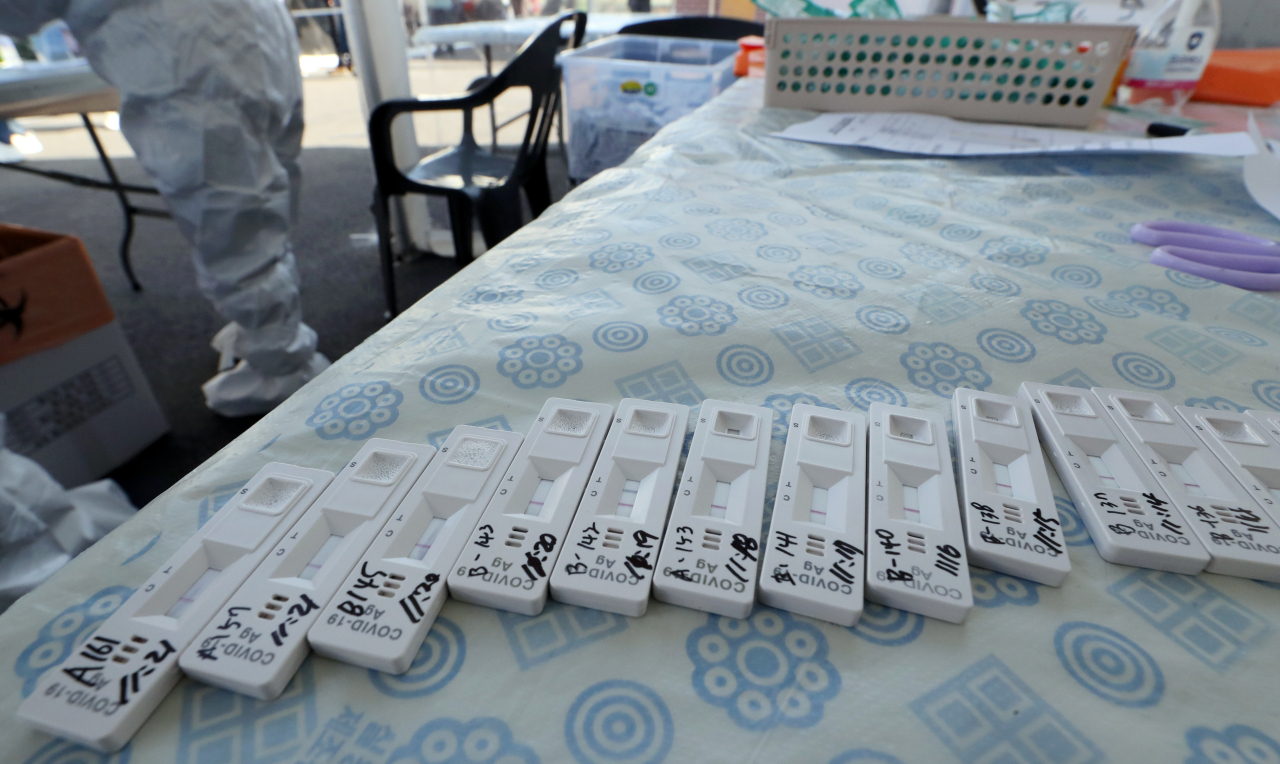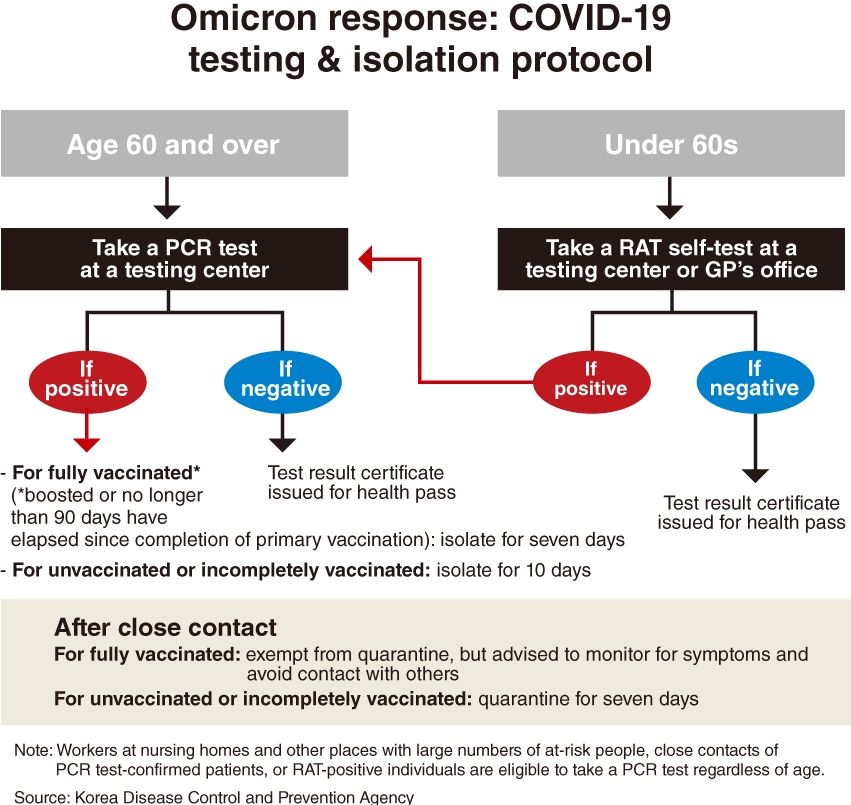
From Thursday onward, Korea has begun its transition to the omicron response that entails a reduced governmental role in controlling the spread of the coronavirus and patient management, but a lot of the foretold changes are yet to be implemented in practice.
Despite announcing that select primary care doctor offices would take on rapid antigen testing and both remote and in-person care of nonhospitalized patients, the list of clinics providing these services had not yet been disclosed as of Thursday morning. The list that was updated later on the day was still incomplete.
While previously patients of all ages were eligible to take a PCR test at state-run testing centers free of charge, now PCR testing is restricted to those 60 and above. For anyone younger, they must present a doctor’s note from a designated clinic alongside a positive rapid antigen test result.
Nursing home workers and people who have been in close contact with PCR test-confirmed patients are eligible to get a PCR test.
To prevent hospitals from becoming overcrowded, home-isolating patients can make in-person visits to certain clinics in the event of worsening symptoms, instead of occupying a bed.
Son Young-rae of the Ministry of Health and Welfare told reporters in a closed-door briefing the 734 clinics partaking in the test-and-care program and where to find them would be available on the Health Insurance Review and Assessment Service website and here, on the Ministry of Health and Welfare website.
He explained that more clinics would be appointed to take on COVID-19 testing and care for less seriously affected patients, as the number of self-isolating patients was projected to rise. As of Thursday midnight, around 90,000 patients were placed in home isolation.
The ministry, while having advocated for less need for pandemic-related interventions, has yet to make a call on whether to extend or ditch the current curbs on gatherings that are capped at six people and 9 p.m. curfews for some businesses, which are set to expire in a few days.
The ministry spokesperson said, “Nothing regarding social distancing rules has been decided yet.” Last month, the ministry said they appeared necessary for the long holiday weekend that fell Jan. 29-Feb. 2.
For the 24 hours of Wednesday, Korea logged 22,907 more cases, exceeding 20,000 for a second consecutive day. Since around mid-January, case numbers have been approximately doubling weekly, with omicron declared the dominant variant here on Jan. 24.
Over the period death rates have not demonstrated a corresponding rise. The latest seven-day average of deaths is 26, only slightly higher than the previous week’s average of 23.
The numbers being reported have surpassed the forecast model by the Korea Disease Control and Prevention Agency released Jan. 21, which said the omicron wave would not reach 20,000 cases until much later this month. The model predicted that by the end of February, daily cases could record 31,800 to 52,200.

By Kim Arin (arin@heraldcorp.com)


![[Exclusive] Korean military set to ban iPhones over 'security' concerns](http://res.heraldm.com/phpwas/restmb_idxmake.php?idx=644&simg=/content/image/2024/04/23/20240423050599_0.jpg&u=20240423183955)

![[Graphic News] 77% of young Koreans still financially dependent](http://res.heraldm.com/phpwas/restmb_idxmake.php?idx=644&simg=/content/image/2024/04/22/20240422050762_0.gif&u=)



![[Pressure points] Leggings in public: Fashion statement or social faux pas?](http://res.heraldm.com/phpwas/restmb_idxmake.php?idx=644&simg=/content/image/2024/04/23/20240423050669_0.jpg&u=)










